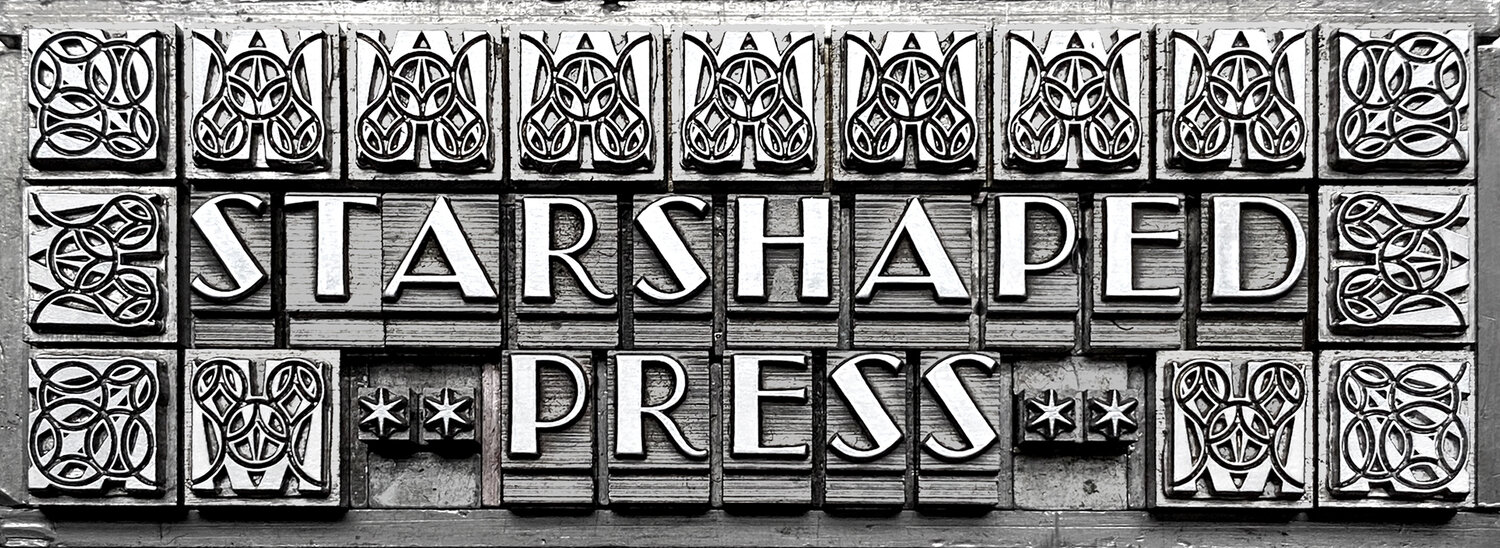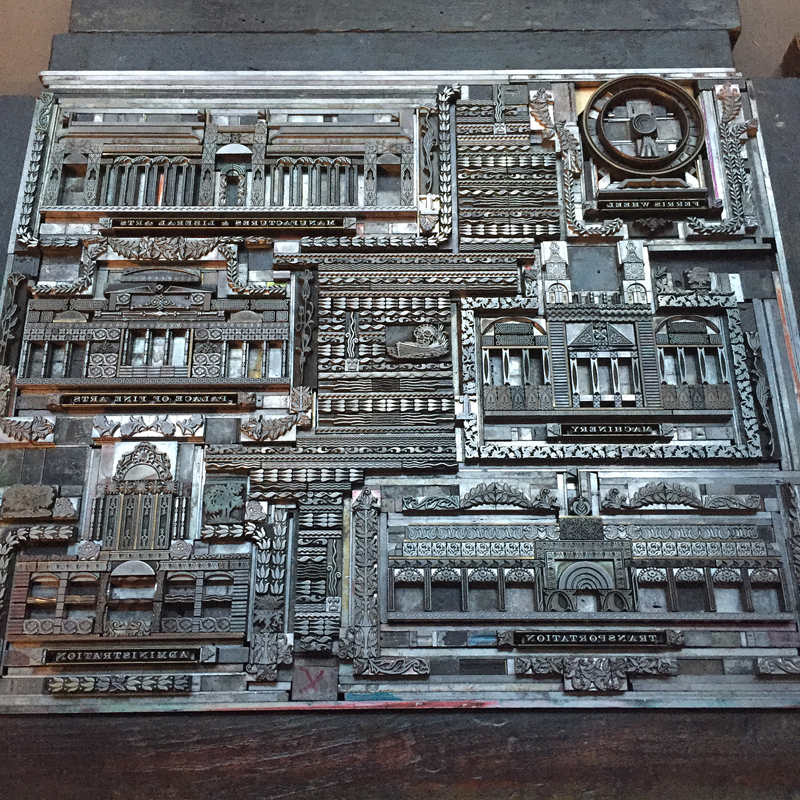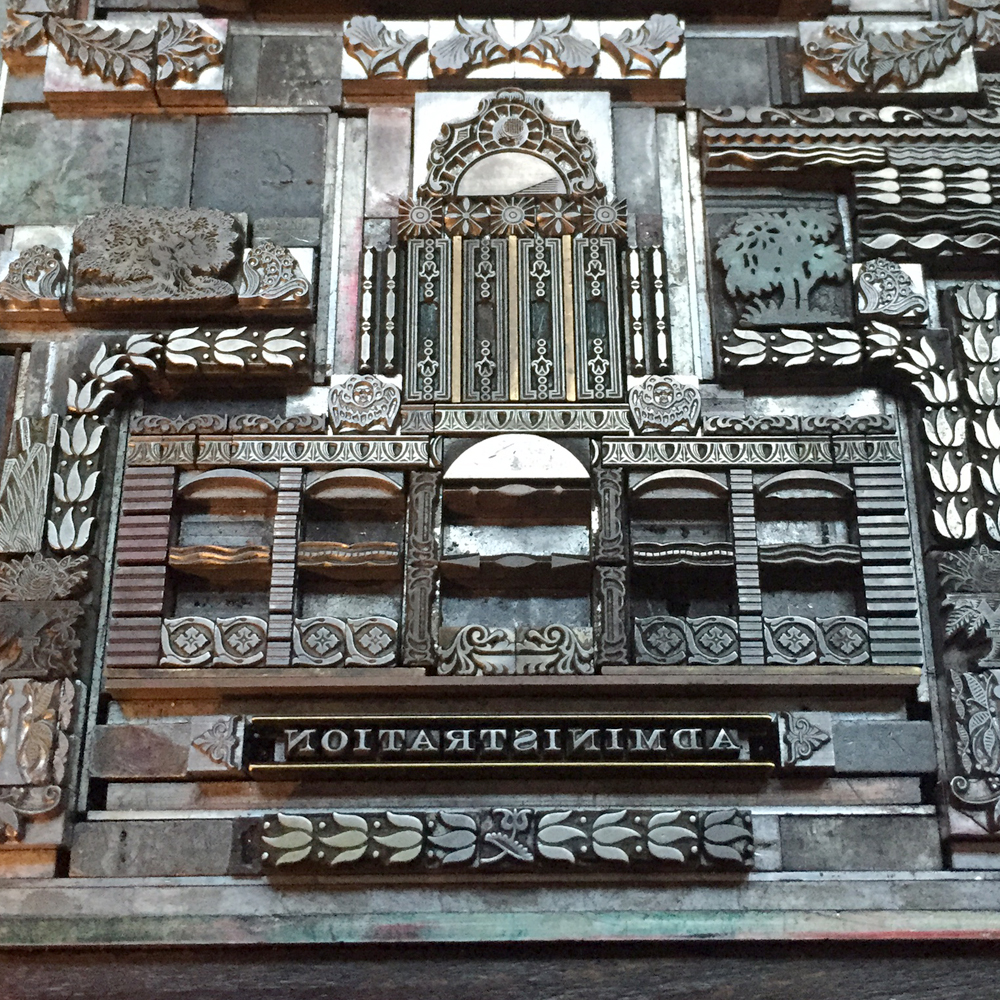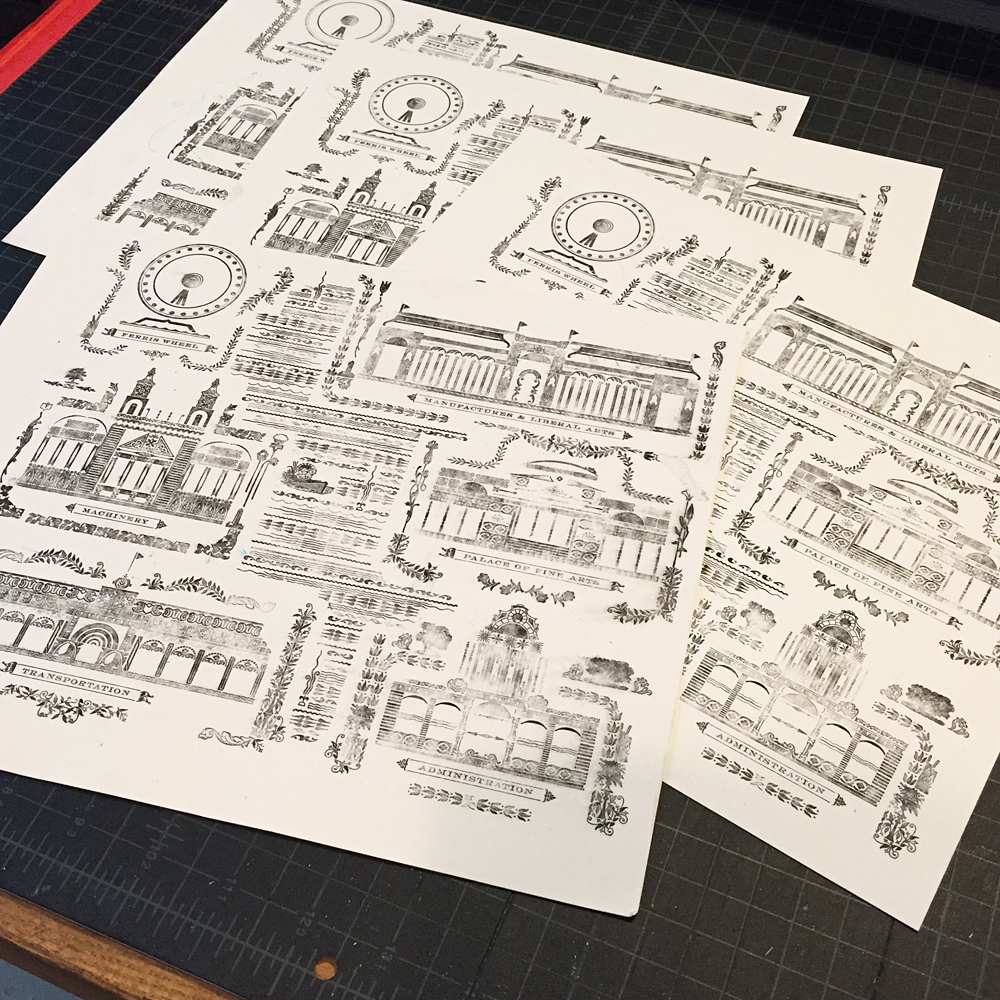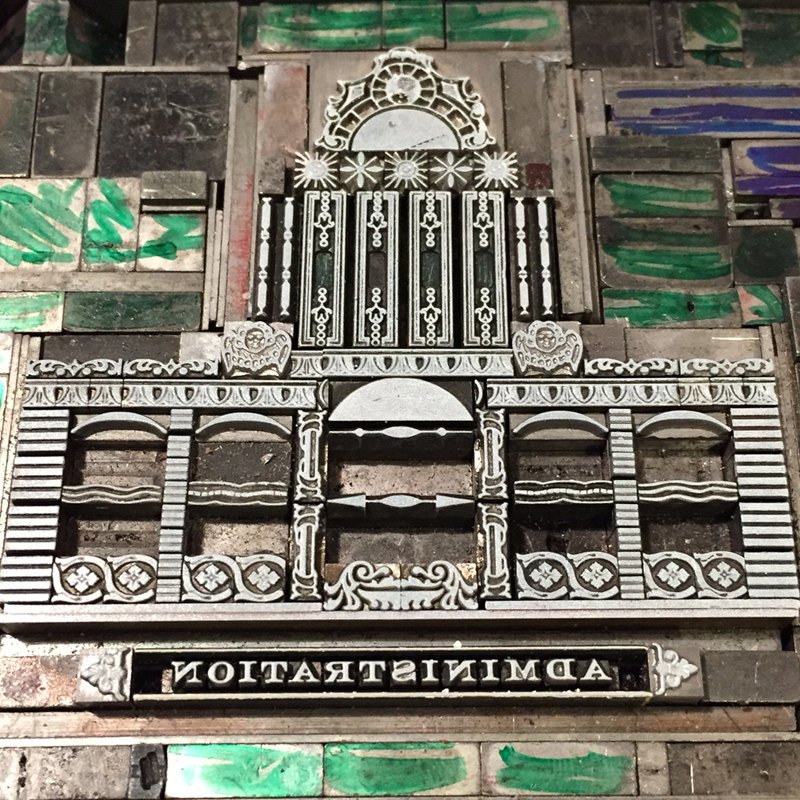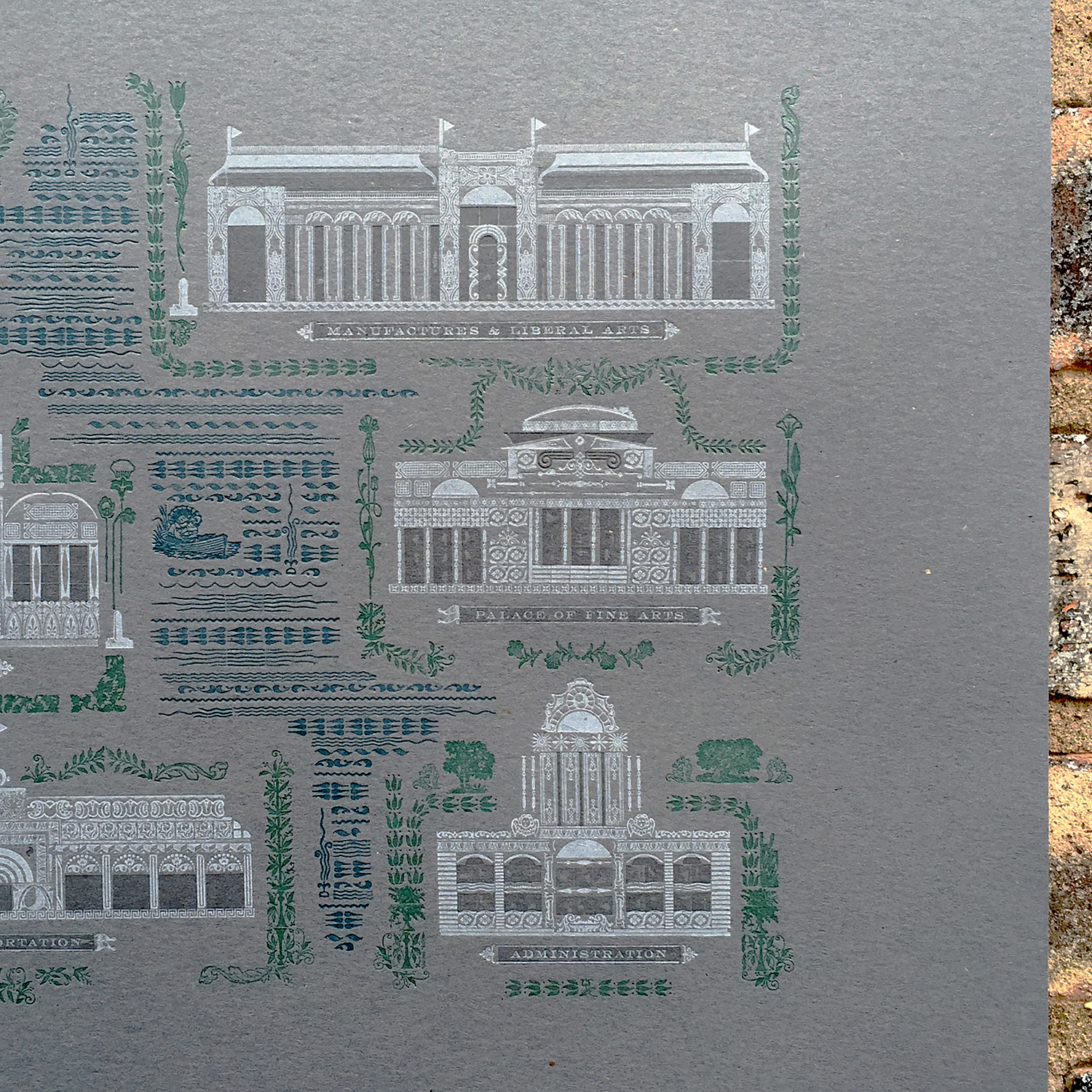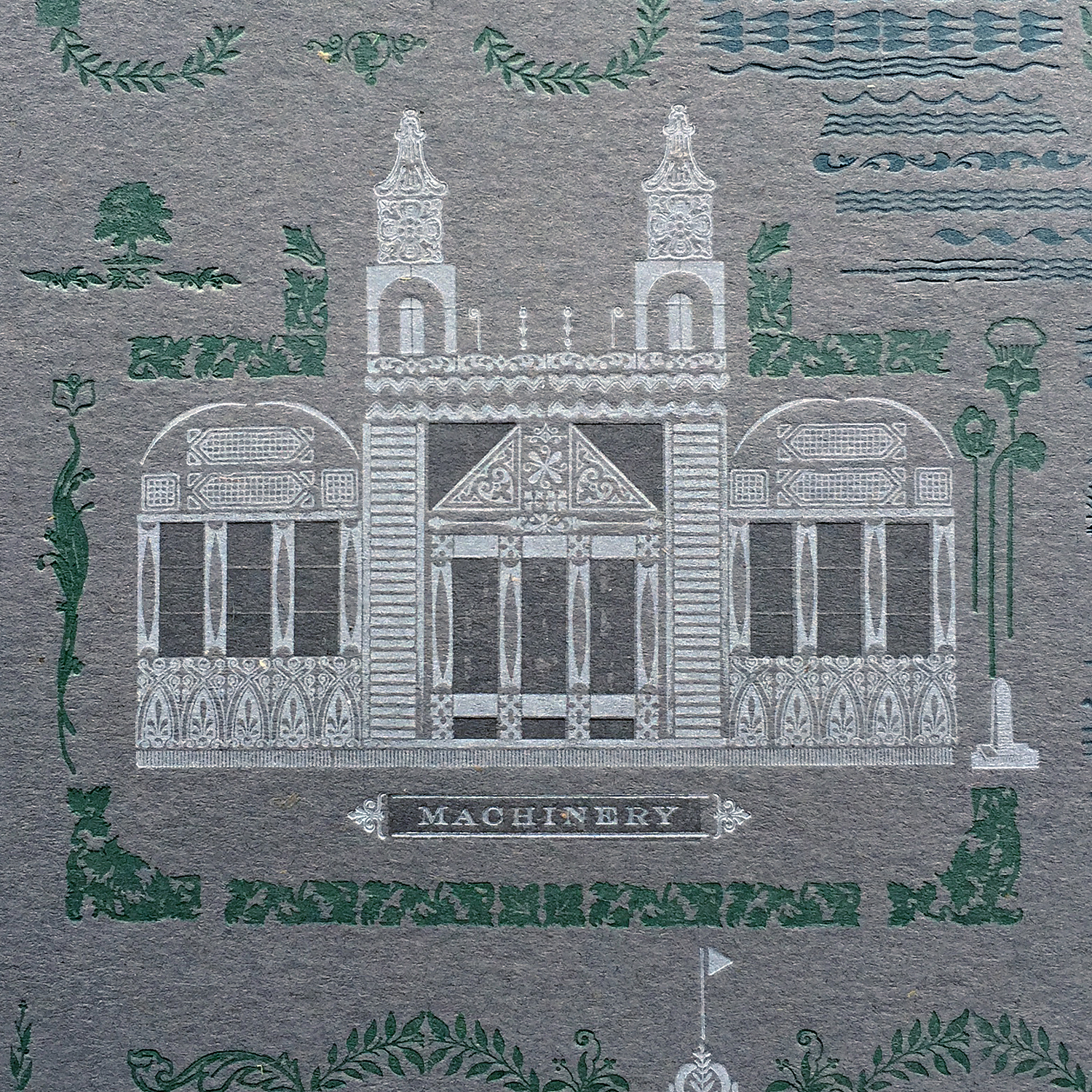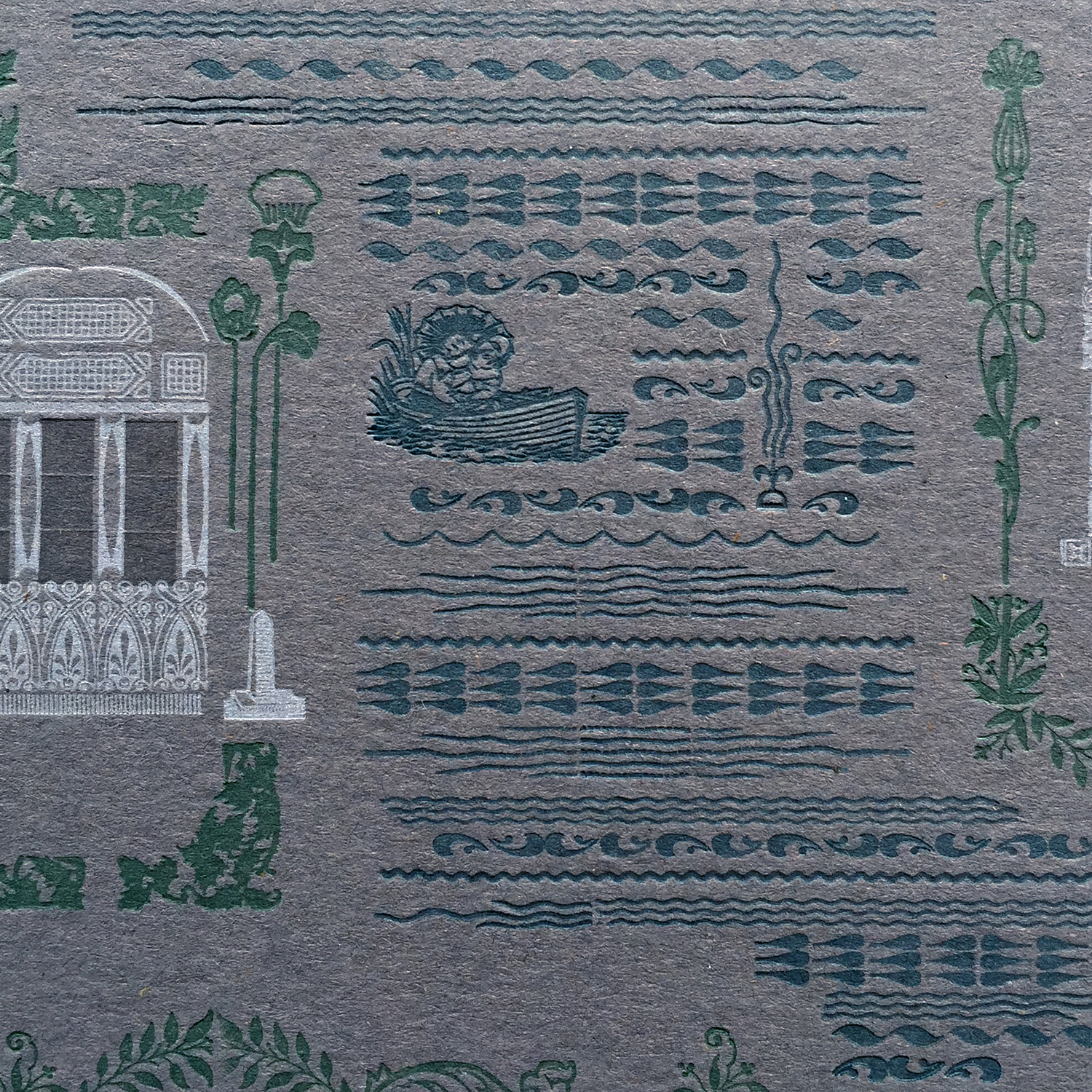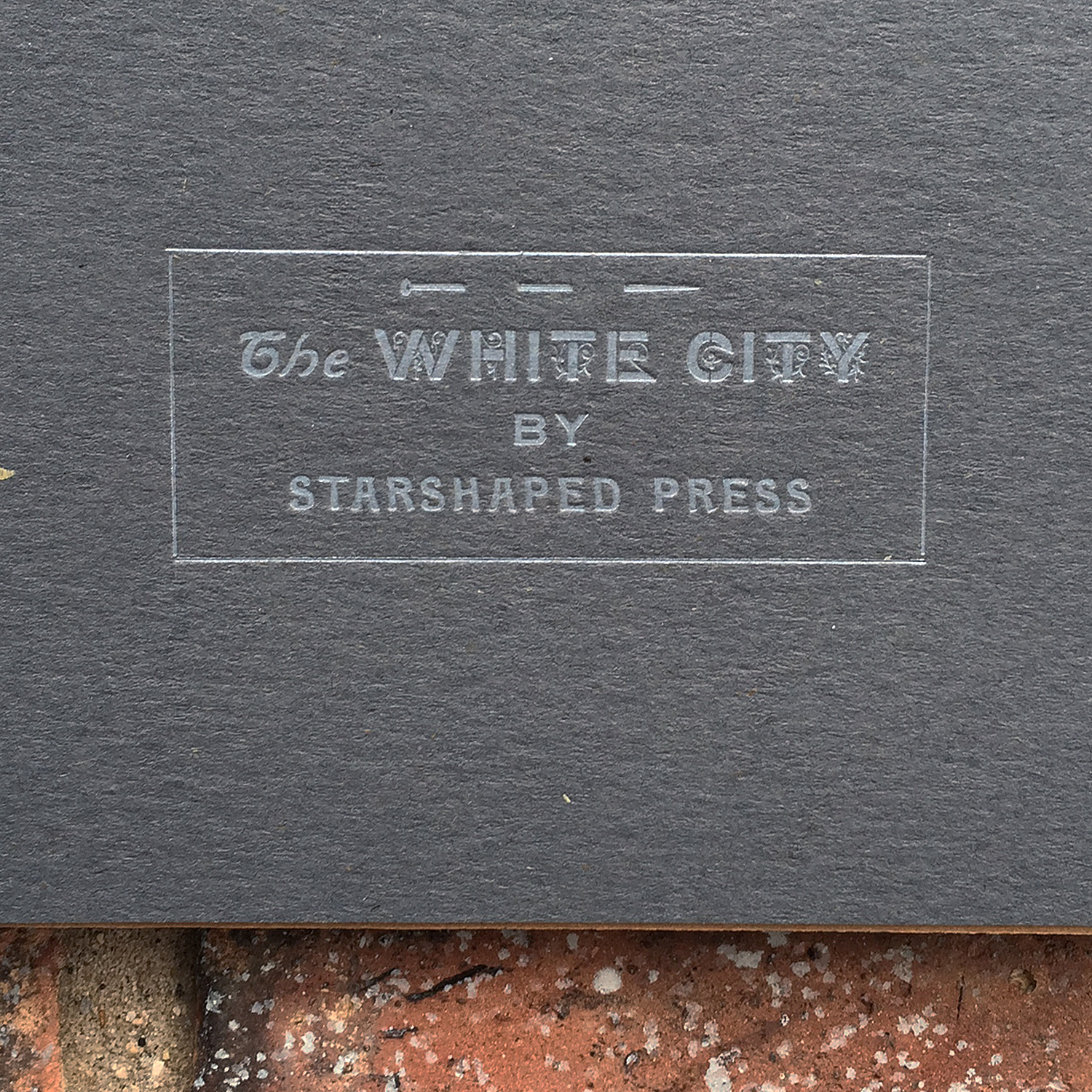It's no secret that I love Chicago. And one of the many events I love about it is the annual Printers Row Book Fair (sure, it's called the Lit Fest now, but that doesn't sound as nice, does it?). Last June, Jo and I found some real treasures, including these souvenir booklets for the Chicago World's Fair Columbian Exposition in 1893, with lovely hand drawn illustrations of the various buildings constructed for the Fair. These were printed in Germany and were clearly either based on preliminary drafts of what would be coined The White City or descriptions of the structures as some of the illustrations are not correct, nor is there mention of the Ferris Wheel, a new-to-the-world invention but relative latecomer to the Fair. The Field Museum also presented an exhibit of some of their treasures from the Fair and that was where I picked up the other book shown here, Spectacle in the White City.
These buildings were screaming out to be recreated in metal type form! It's rare that this is the case, but my biggest concern was finding a paper that would allow for the exploration of printing them in white ink and I did. More on that later.
The first step was to figure out the structure and scope of the print given the sheer size of the Fair. I set the parameters so that the print would be at home with our Urbs in Horto homage to Chicago's city seal. Then I grabbed a dark sheet of paper and sketched out the basic layout.
The hard part was determining what structures to include, but I think the final choices were wise ones. More on these choices in the photos to follow. Slowly and painfully, I pulled ornaments that might resemble elements of the buildings.
As the buildings started to take form, I moved on to the gardens and water features.
I read that Daniel Burnham kept a sign above his desk that said RUSH while laboring to make the Fair happen in a breathtakingly short period of time. I left out wood type to this effect to keep me on task. I also wanted to use the little 'kissing kids' ornament in the water area as it was used on the Urbs in Horto print and was also produced in Chicago at the time of the actual Fair.
Mr. Starshaped felt the Ferris Wheel lacked something so I had to think on it a bit more. Setting circular forms is hard enough.
The labels for the buildings were set in tiny 6 point Engravers Roman, a particularly old and beaten up version. They are set to resemble little ribbons with great end caps.
Here's the first final form! Looks great in photos, but print is another beast.
Details of the form follow here. The Administration building is one of the first you would have seen if you took the train to the Fair. I loved its stately manner and tried to work in little angel faces to represent the many symbolic sculptures that graced the façade.
Machinery was also an appealing building for its church-like steeples and large skylights. Plus... I like machinery.
Manufactures and Liberal Arts had to be included as the largest building of the Fair. The sheer size must have been a sight to behold. This building looks better in 2-color so there are more images to come.
The Palace of Fine Arts was a must, given that this is the only building that still stands today in the form of the Museum of Science and Industry (Have you been there? The U-505 tour is worth the price of admission alone).
The Transportation Building was designed by Adler and Sullivan and included an incredible 'golden door'. The challenge here was to find tiny ornaments that most represented the style of work for which Sullivan is known.
I added circles to the Ferris Wheel to represent individual carriages. The scale of this print prevented a more elaborate solution so let's just say there might be a bigger Ferris Wheel print to come in the future.
Last but not least, the title. I kept the format of the Urbs in Horto print, complete with 'pin' ornaments.
Before any ink touches the press I pull a series of carbon paper proofs for general placement and to get a quick glimpse of what I'm up against. Many small tweaks were made at this point.
Once I was happy with the overall look I set up the first color and pulled a full proof before breaking down the form for different colors. I marked up a few changes on this as you can see, as well as left a few notes for myself going into the next colors.
The forms are pretty, inked in white.
You can see here that much of the spacing is colored with Sharpie to indicate where I put it in place of the other ornaments I pulled out. This is what passes for color separations in old school letterpress.
The second color was a subtle hit of transparent white which has the look of a varnish on the paper. I wanted to use this to make the negative spaces of the buildings recede. Not an exciting form, but here you can see a few of the solutions to create solid areas of ink.
Kissing kids!
The water elements underwent the most drastic changes. I initially thought it would be set pretty solid between the buildings but then loosened it up over subsequent proofs and made it more organic. You can see the 'ghosts' of the buildings and gardens in this crazy form.
The final print! It measures 14x18" and is printed in 4 colors. It's a bit tough to photograph because of the subtle colors and texture of the paper. I worked with Neenah'sWrought Iron from their Environment line and it was the perfect paper; a dark enough gray to show white but light enough for darker colors, and it has little recycled inclusions that give it just a bit of the rough and tumble feel of Chicago itself. The final edition size is 125 prints.
Chicago will always be my first true love and its rich history, warts and all, will continue to provide ample resource material for print inspiration. The White City is officially the hardest print I have ever set and the lessons learned both about my typesetting ability and the history of the city will no doubt guide all future projects at Starshaped. Huge thanks to all of the fine folks that supported the midwestern gumption behind this project through kind words, sales and Chicago-style chop-bustin'. And much like the Fair itself, this is what the remains looked like:
The print is available for sale here while the edition lasts. This one won't be reprinted, folks.
